Potrebujeme váš súhlas na využitie jednotlivých dát, aby sa vám okrem iného mohli ukazovať informácie týkajúce sa vašich záujmov. Súhlas udelíte kliknutím na tlačidlo „OK“.
ASTM E1998-11
Standard Guide for Assessing Depressurization-Induced Backdrafting and Spillage from Vented Combustion Appliances
Automaticky preložený názov:
Štandardné orientačný bod pre posúdenie zníženia tlaku vyvolané Backdrafting a rozliatie unikajúcich spaľovacích zariadení
NORMA vydaná dňa 1.9.2011
Informácie o norme:
Označenie normy: ASTM E1998-11
Poznámka: NEPLATNÁ
Dátum vydania normy: 1.9.2011
Kód tovaru: NS-43894
Počet strán: 14
Približná hmotnosť: 42 g (0.09 libier)
Krajina: Americká technická norma
Kategória: Technické normy ASTM
Kategórie - podobné normy:
Anotácia textu normy ASTM E1998-11 :
Keywords:
backdrafting, carbon dioxide, carbon monoxide, combustion appliances, downdrafting, draft diverter, draft hood, flue gas, house depressurization, house tightness, induced fan, nitrogen oxides, residences, spillage, water vapor: Carbon dioxide, Carbon monoxide (CO), Backdrafting, Combustion appliances, Depressurization, Downdrafting, Flue gas, House depressurization test, Nitrogen oxides, Residential depressurization/tightness, Residential dwellings, Spillage, Vented combustion appliances
Doplňujúce informácie
| Significance and Use | ||||||||||||
|
Although a number of different methods have been used to assess backdrafting and spillage (see NFPA 54, CAN/CGSB-51.71, and 1-4) a single well-accepted method is not yet available. At this point, different methods can yield different results. In addition, advantages and drawbacks of different methods have not been evaluated or described. To provide a consistent basis for selection of methods, this guide summarizes different methods available to assess backdrafting and spillage. Advantages and limitations of each method are addressed. One or more of the methods described in this guide should be performed when backdrafting or spillage from vented combustion appliances is suspected to be the cause of a potential problem such as elevated carbon monoxide (CO) levels or excessive moisture. The following are examples of specific conditions under which such methods could be performed: When debris or soot is evident at the draft hood, indicating that backdrafting may have occurred in the past, When a new or replacement combustion appliance is added to a residence, When a new or replacement exhaust device or system, such as a downdraft range exhaust fan, a fireplace, or a fan-powered radon mitigation system, is added, When a residence is being remodeled or otherwise altered to increase energy efficiency, as with various types of weatherization programs, and When a CO alarm device has alarmed and a combustion appliance is one of the suspected causes of the alarm. Depending on the nature of the test(s) conducted and the test results, certain preventive or remedial actions may need to be taken. The following are examples: If any of the short-term tests indicates a potential for backdrafting, and particularly if more than one test indicates such potential, then the appliance and venting system should be further tested by a qualified technician, or remedial actions could be taken in accordance with 5.5.3. If continuous monitoring indicates that backdrafting is occurring, and particularly if it indicates that spillage is occurring that impacts indoor air quality (for example, elevated CO concentrations or excessive moisture in the house), then remedial action is indicated. Possible remedial actions include the following: At a minimum, a CO alarm device could be installed in the house. Limiting the use of devices or systems that increase house depressurization, such as fireplaces and high-volume exhaust fans. Proper sealing of any air leakage sites, especially at the top floor ceiling level, can also reduce house depressurization at the lower levels of the house. Partially opening a window in the furnace or appliance room, if available. Keeping the door nearest the appliance room open at all times or putting louvers in the door. Providing increased makeup air for the appliance (for example, by providing a small duct or opening to the outdoors near the appliance). If remedial actions are not successful, then consideration can be given to correcting or replacing the venting system or, if necessary, replacing the spilling appliance with one that can better tolerate house depressurization. The understanding related to backdrafting and spillage phenomena is evolving. Comprehensive research using a single, reliable method is needed to better understand the frequency, duration, and severity of depressurization-induced spillage in a broad cross section of homes (5). In the absence of a single well-accepted method for assessing the potential for or occurrence of backdrafting or spillage, alternative methods are presented in this guide. The guide is intended to foster consistent application of these methods in future field work or research. The resultant data will enable informed decisions on relative strengths and weaknesses of the different methods and provides a basis for any refinements that may be appropriate. Continued efforts along these lines will enable the development of specifications for a single method that is acceptable to all concerned. |
||||||||||||
| 1. Scope | ||||||||||||
|
1.1 This guide describes and compares different methods for assessing the potential for, or existence of, depressurization-induced backdrafting and spillage from vented residential combustion appliances. 1.2 Assessment of depressurization-induced backdrafting and spillage is conducted under either induced depressurization or natural conditions. 1.3 Residential vented combustion appliances addressed in this guide include hot water heaters and furnace. The guide also is applicable to boilers. 1.4 The methods given in this guide are applicable to Category I (draft-hood- and induced-fan-equipped) furnaces. The guide does not apply to Category III (power-vent-equipped) or Category IV (direct-vent) furnaces. 1.5 The methods in this guide are not intended to identify backdrafting or spillage due to vent blockage or heat-exchanger leakage. 1.6 This guide is not intended to provide a basis for determining compliance with code requirements on appliance and venting installation, but does include a visual assessment of the installation. This assessment may indicate the need for a thorough inspection by a qualified technician. 1.7 Users of the methods in this guide should be familiar with combustion appliance operation and with making house-tightness measurements using a blower door. Some methods described in this guide require familiarity with differential-pressure measurements and use of computer-based data-logging equipment. 1.8 The values stated in SI units are to be regarded as standard. No other units of measurement are included in this standard. 1.9 This guide does not purport to address all safety concerns, if any, associated with its use. It is the responsibility of the user to establish appropriate safety and health practices and to determine the applicability of regulatory limitations prior to use. Carbon monoxide (CO) exposure or flame roll-out may occur when performing certain procedures given in this guide. See Section 7, for precautions that must be taken in conducting such procedures. |
||||||||||||
| 2. Referenced Documents | ||||||||||||
|
Podobné normy:
Historická
1.7.2014
Historická
1.7.2012
Historická
1.11.2012
Historická
1.11.2012
Historická
1.10.2008
Historická
1.6.2013


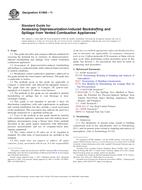
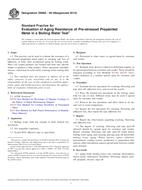 ASTM D6665-09(2014)..
ASTM D6665-09(2014)..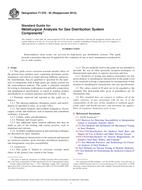 ASTM F1376-92(2012)..
ASTM F1376-92(2012)..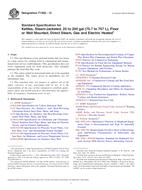 ASTM F1602-12
ASTM F1602-12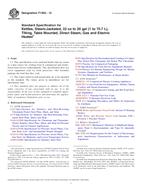 ASTM F1603-12
ASTM F1603-12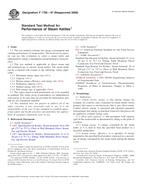 ASTM F1785-97(2008)..
ASTM F1785-97(2008).. ASTM F2022-01(2013)..
ASTM F2022-01(2013)..
 Cookies
Cookies
